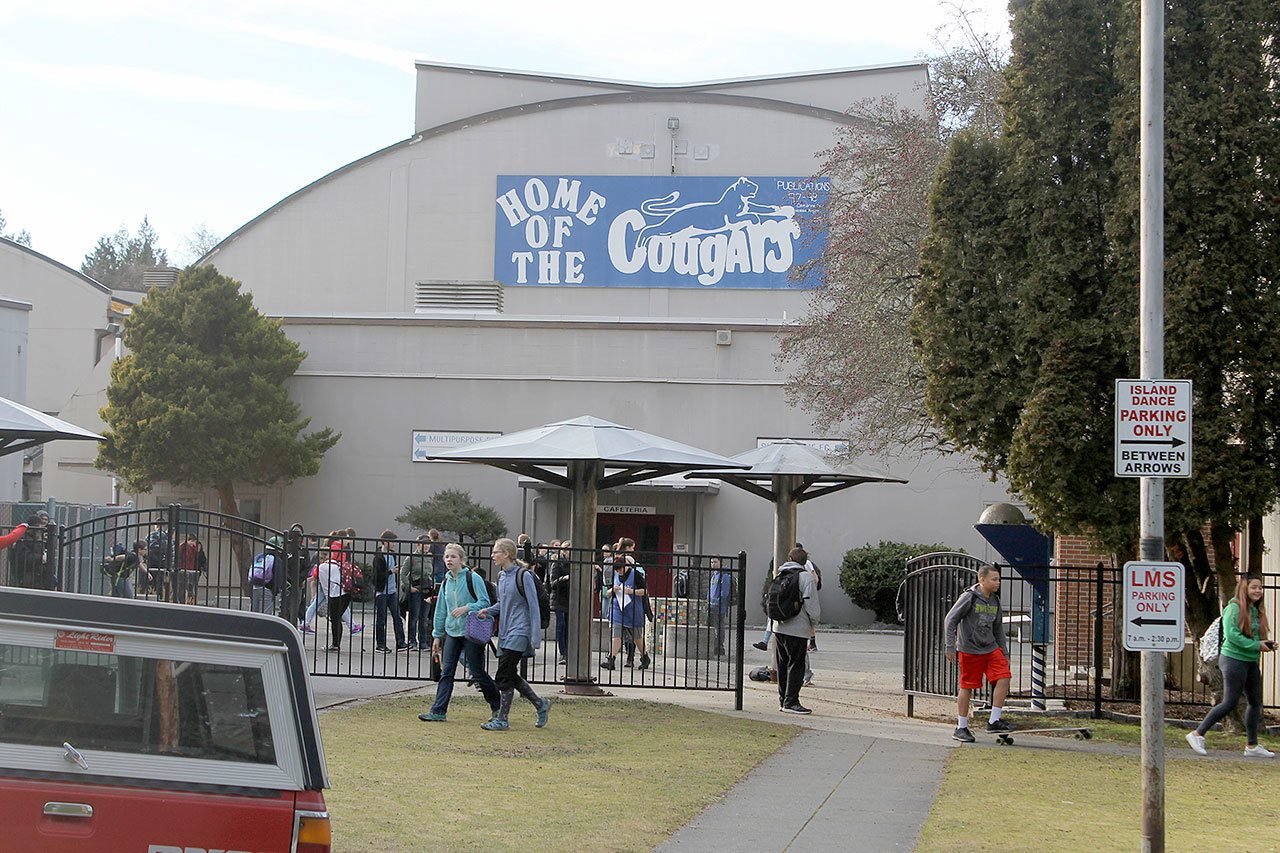Langley Middle School’s doors will shut indefinitely after the South Whidbey School Board voted 4-1 to close the school Wednesday night.
The decision saves the South Whidbey School District $321,996 in net operating costs for the 2017-18 school year and will help the district meet a board policy that requires it to end with a positive fund balance of $998,000. Had the board done nothing, the district would have needed to save around a half million dollars, which is roughly equivalent to the salaries of eight to 10 teachers.
Still looming, however, is a deficit of around $200,000. While Superintendent Jo Moccia maintained this week that shuttering the school will save the jobs of around 10 teachers, there are still a few unknowns that could potentially lead to a reduction in staff.
According to Assistant Superintendent of Business Dan Poolman, it is unclear how much money the district will receive from the state budget, as the state legislature is currently working to fully fund education as part of the 2012 McCleary Decision, while there are also negotiations with teachers and classified staff unions expected in the coming months.
“I can’t say closing a building is going to solve that issue,” Poolman said. “The closure of the building is just the beginning of the process. There’s a lot we still don’t know and the questions that you and the community are going to have.
Moccia said the reduction of staff is highly unlikely because she anticipates some teachers retiring. She said in the outside chance that it does have to occur, it would be because of an unforeseeable dip in enrollment.
Asked how the district will close the deficit gap of $200,000, Moccia said that is “yet to be determined.”
How students will be divvied up between South Whidbey High School and the elementary school will be decided on Feb. 1, following meetings with teachers around the district Thursday and Friday.
Two options are under consideration: The first would move grades 6-8 to the high school, while the second would send sixth graders to the elementary school and grades 7 and 8 to the high school.
The decision capped a nine-month process that began in May 2016. Four community meetings were conducted during that time regarding consolidation of facility usage. It eventually became clear that the district was planning to close a school. The middle school was later identified as the district’s most expensive building to operate.
Moccia declined the South Whidbey Record’s request to visit with students on campus on Thursday for this story, saying it would be inappropriate to interview students without parent approval. A Record reporter chatted with several students at The HUB, an after-school hangout center in downtown Langley, after school got out; the only students quoted were those whose parents OK’d the interview.
Students’ reactions were mixed. Some said they would miss the school, while others were apprehensive to mix with high schoolers. Eighth-grader Nate Hall said that while he expected the closure due to a lack of funding in the district, he would be sad if the school was underutilized.
“I don’t want it to be completely unused,” Hall said. “They should keep the track and football field open to the public.”
Hall was also eager to find out how the students would be split up between the high school and elementary school. He also felt the transition to high school life will be slightly less glamorous when other middle schoolers make the trek to Maxwelton Road.
Madison Gabelein, a seventh-grader, said some of the middle school’s culture will be lost when she and other students settle into their new home at the high school this fall. She said she’ll also miss the campus.
Board Director Damian Greene was the lone dissenting vote against the school’s closure.
Greene suggested prior to the board’s vote that the district could pull around half a million dollars from its reserve fund balance to make up the deficit or push back the decision by two months to wait for any developments with the state Legislature. The ideas were shot down by the rest of the board as they did not want to drain half of the district’s reserve funds.
Another suggestion by Greene to allow a public comment period before the vote was made was also denied. There were no public comments at the meeting.
The board directors who did vote for the school’s closure — Linda Racicot, Julie Hadden, Shawn Nowlin and Fred O’Neal — took turns expressing their reasoning for their decisions. Their sentiments were similar in that they wanted to act in the best interests of the students, while also saving teachers and programs. They were also in favor of being fiscally responsible.
Racicot, board chairwoman, said the building will be cherished and that if a “huge” influx of students were to enroll in the school district in the future, the school will be available for usage.



